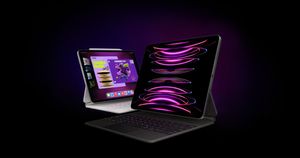
When most Indian smartphone makers are happy selling low-cost rebadged Chinese handsets, while making little to no effort towards research and development, Smartron has invested in two R&D centres in Hyderabad and Bangalore. It’s among the rare breed of Indian companies that have taken the decidedly harder route of designing and engineering their own products, with an aim to handle manufacturing as well in the future. With one hybrid convertible laptop/tablet already out in the market, it has set its eyes on the smartphone segment with the Smartron t.phone. If I were a betting man, I’d have wagered that its first phone would be targeted at the Rs 10,000 to Rs 12,000 budget segment. Surprisingly, that isn’t the case at all.
Smartron t.phone
What Is Good?
- Lightweight
- Android 6.0.1 Marshmallow
- Good low light selfies with front camera
- 64 GB expandable storage
What Is Bad?
- Sub par build quality
- Performance and optimisation issues
- Mediocre battery life
- Mediocre camera and Poor low light performance
- Disappointing display
Call it ballsy, foolhardy, or downright insane, but Smartron has skipped right past the budget segment and aimed for the upper mid segment smartphones. For an asking price of Rs 25,000, the t.phone competes with the likes of much better specced Xiaomi Mi 5 and LeEco Le Max2, and also last year’s flagship phones such as the One Plus 2 and LG G4 that sport the same sort of hardware. At the outset, this makes it hard to even consider the t.phone. Would you rather put your hard earned money on an unproven phone from a first time Indian phone maker, or rather go for established international brands that put out polished and well-designed products? Me neither.
However, let’s not forget that Smartron has been backed by Sachin Tendulkar. And when I say backed, I mean that the master blaster himself has invested his own money into the company. To put this into perspective, while Salman Khan gets a lot of bad rep (deservedly so, I must add) despite being generous with charity, Sachin is the sort of person who’s smart enough to reach into others’ pockets for charity. I mean, the man doesn’t donate his own money even when orphans are involved. Then there’s the fact that it didn’t take long for the man to sell the 360 Modena gifted to him by Ferrari, especially after the company stepped in to pay the import duty following much hue and cry.
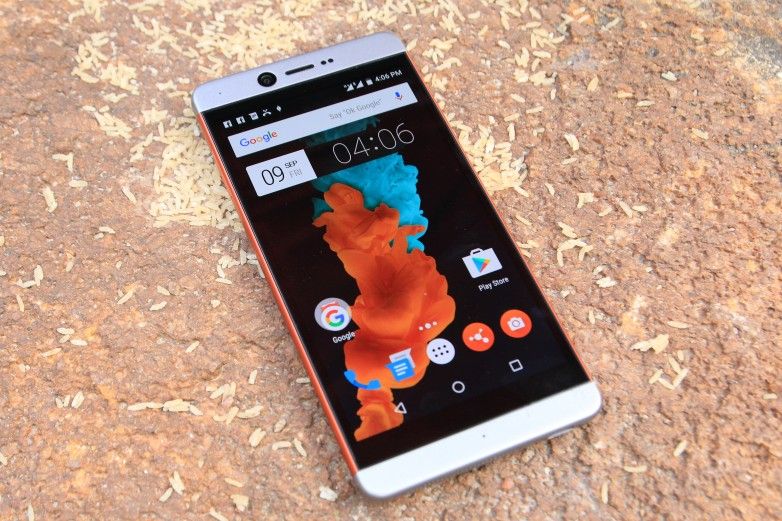
My point is that Sachin Tendulkar is the sort of man who doesn’t move a muscle unless there’s something in it for him. And if this man has deemed it fit to invest his hard earned money (barring the same earned from selling off the Ferrari, of course), there’s a good chance that I might be missing something important here. I believe, the only way to get to the bottom of this is figuring out whether the t.phone itself lives up to high expectations set by the master blaster.
Design and Build Quality
The t.phone is a surprisingly good looking handset. The design is decent enough for a first attempt, even if it doesn’t stand up to the high standards set by the mid-end and even budget smartphones from Chinese manufacturers. The orange and grey dual-tone finish looks appealing without being gaudy. However, those who seek an understated look can opt for the classic all-grey variant, whereas the gaudy pink version caters to the other end of that spectrum. Unfortunately, your choice of colour won’t matter once you figure out that the paintwork will get scratched off during the course of regular usage.
On the bright side, Smartron has managed to keep the phone’s heft in check despite its 5.5-inch form factor. This is evident in the relatively minimalist bezel and a weight of only 148 grammes, which is quite light for a phone that employs a metal chassis. The uncharacteristically low weight, however, is a consequence of the phone’s low grade metal construction. This is quite evident in the scratch test, where the palpably softer metal chassis proved susceptible to even light scratches, even when the much cheaper (Rs 12,000) LeEco Le 2’s metal body could easily resist scratches of the same intensity.
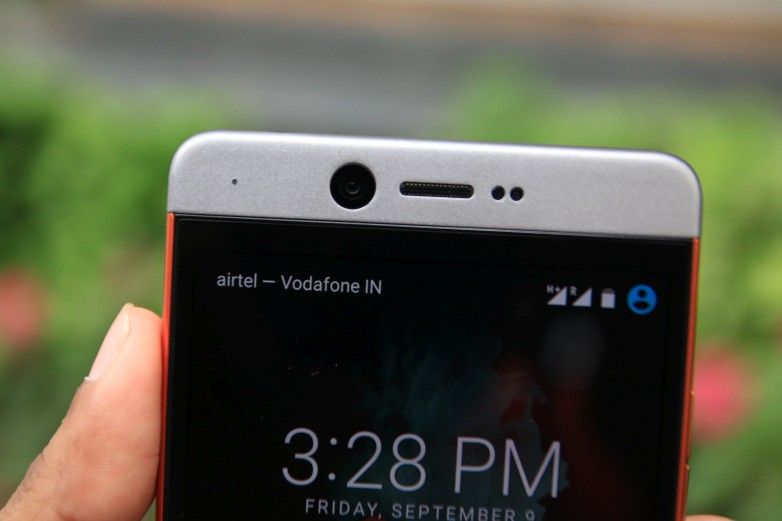
Nevertheless, the hybrid metal and plastic construction feels great in the hand due to the rounded edges and an overall thickness of 6.9 mm, which isn’t bad at all. As with all metal handsets, the t.phone has a tendency to be slippery. Although they look great and are machined precisely, the power and particularly the volume rocker buttons on the right-hand side edge feel spongy and are placed a tad too high considering the length of the phone. The opposite edge also houses a hybrid tray that accepts two nano SIM and a micro SD card. It can also double up as a dual SIM tray if you sacrifice the micro SD slot.
Build quality issues are the least of the t.phone’s problems considering the subpar fit and finish levels. The panel gaps are conspicuous and uneven, with certain parts of the top and bottom bezels being more recessed into the chassis at some corners. In fact, a part of the top bezel on the rear side had already come loose during the course of the review. This is shoddy and feels absolutely criminal considering the phone’s Rs 25,000 sticker price. The same is particularly true about the display, which isn’t bonded flush to the Gorilla Glass 3 panel, as expected of phones in this price range. The glass panel too doesn’t run the entire length of the front fascia, leaving conspicuous seams between it and the bezels. That gives the phone a downmarket feel reserved for phones that cost less than Rs 10,000.
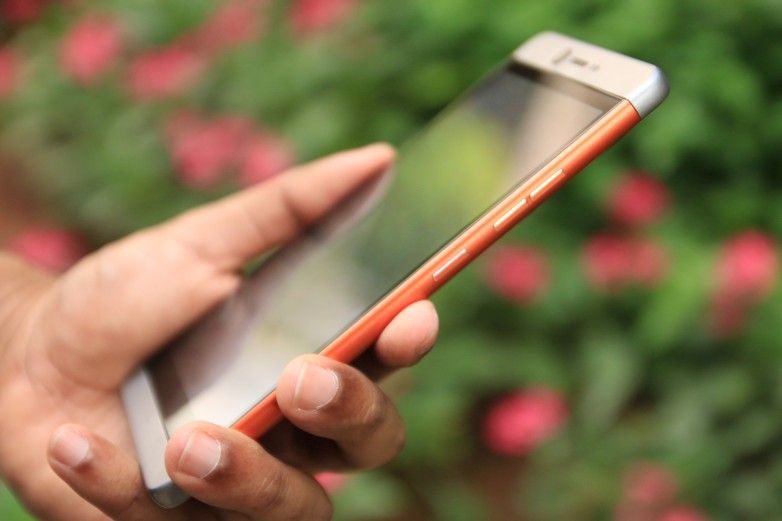
The display itself is much smaller than the protective panel, which invariably makes one assume that the thick strip at the bottom houses capacitive buttons for App Switcher, Home and, Back functions. In reality, the phone overlays these navigation buttons within the UI instead.
The square rear camera and rectangular dual-LED flash at the rear of the phone look out of place compared to the overall design. On the flip side, the circular front camera lens, the earpiece and proximity/ambient light sensors fit in well with the rest of the phone. The bottom edge houses a USB Type-C port flanked by a speaker grille, but don’t let that worry you because the top edge sports a regular 3.5 mm TRS jack, which means you can still continue to use your favourite earphones. Take that, iPhone 7.
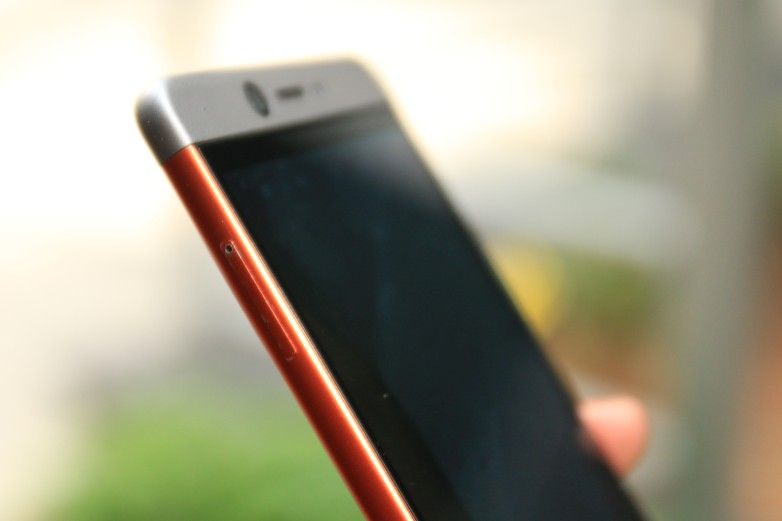
Display
The Smartron t.phone’s 5-5-inch Full HD (1080×1920) AMOLED display is largely disappointing. Make no mistake, it’s perfectly legible outdoors in bright sunlight thanks to Apical’s Assertive Display technology, but that very aspect also causes major complications. Being a display geek, I’m a huge fan of OLED displays to the extent that almost every single smartphone I have owned over the years has been equipped with an OLED panel. These displays are perfect with quick response times and nonexistent ghosting, in addition to excellent viewing angles, colour, contrast, and accuracy. Unfortunately, in the quest to make the AMOLED screen legible outside, the t.phone drops the ball when it comes to the basic visual fidelity.
The display is incredibly oversaturated, even by AMOLED standards, which is further compounded by the propensity of the display brightness to go from “too dark” to “turn off the goddamn torchlight!” within the first 25-percent of the slider itself. This is most evidently why the display showed black crush and fared poorly in white saturation tests. Even the colour gradient test was a disappointment, with high saturation levels making it hard to discern between fine colour gradients.
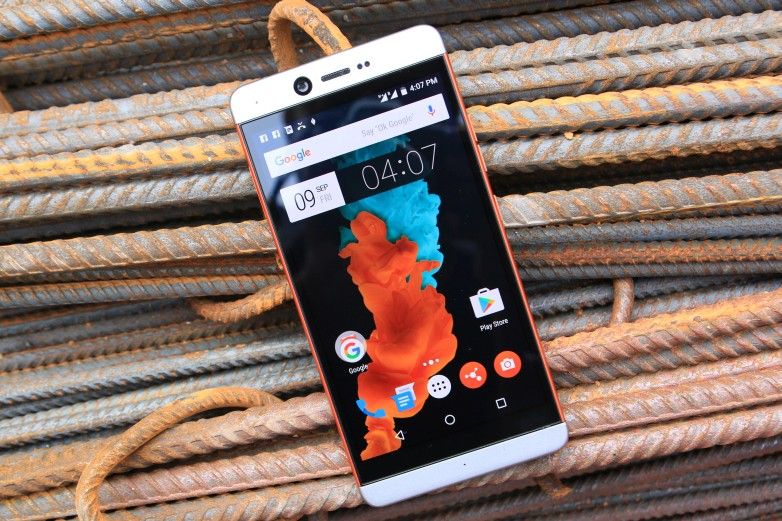
The automatic brightness setting is poorly implemented and kept defaulting to extremely high display intensity no matter how dim the ambient lighting got. It was practically useless, so I was forced to revert to the manual brightness control option. This is strange considering the fact that the phone is supposed to have a dedicated backlight controller. However, this problem didn’t exist in the non-retail debug unit that I received as a replacement after the original review sample was plagued with debilitating software issues.
For what it’s worth, the AMOLED display at least gets the white point right and is sufficiently sharp due to a pixel density of 401 PPI. The contrast levels are impressive since it’s an AMOLED screen, but that still doesn’t make up for the display’s inherent flaws. In all honestly, most people will not pay much heed to these severe flaws. A layman is most likely to be bowled over by the sexed-up oversaturated colours and the intense brightness levels. Having said that, this is definitely one of the poorer AMOLED displays I have tested so far.
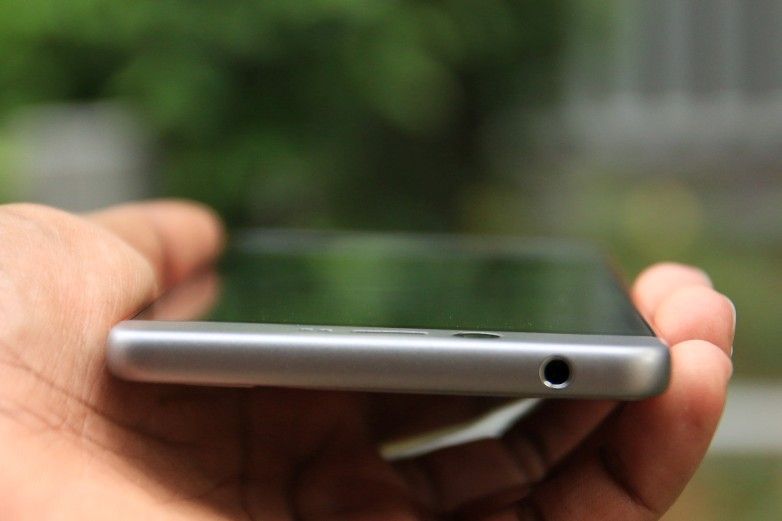
Camera
It’s really hard to get the camera right even for seasoned smartphone makers. It’s not just about the optics and the sensors, but the software implementation matters a great deal as well. Sony, for example, makes mediocre smartphone cameras despite providing camera sensor modules to some of the best smartphone manufacturers, who end up doing a better job of implementing the same hardware. That’s basically, why you shouldn’t get carried away by the specifications of the t.phone’s 13-megapixel sensor, which is backed by phase-detection autofocus and dual-LED flash. While the camera looks decent on paper, the real world performance leaves a lot of be desired. Results in bright daylight are pretty decent with a fair amount of fine details captured, but that doesn’t cut it at this price range, where some degree of low-light performance is expected.
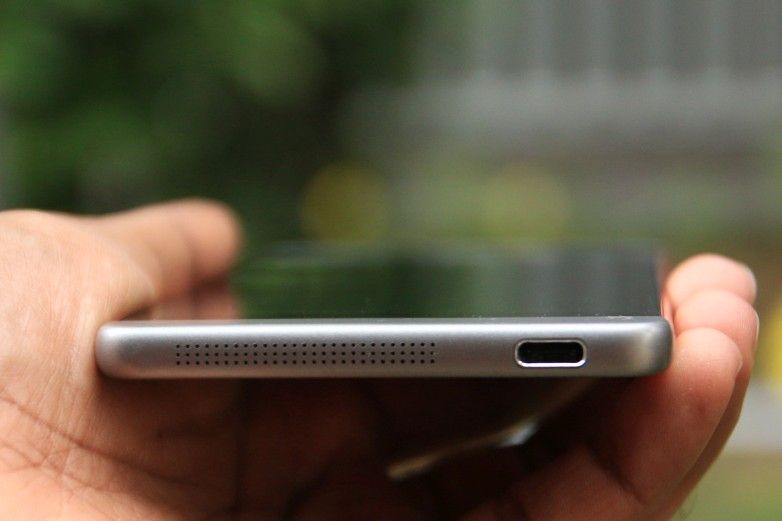 And that’s where the camera falters big time. The time required to focus, which isn’t impressive to begin with in bright conditions, is even longer when ambient light is scarce. Low light images themselves look grainy and absolutely devoid of detail, with the camera having a hard time to get anything in focus. Thankfully, the manual controls included in the custom camera app can be used to improve things a bit if you know what you’re doing. But that still doesn’t do any favours for the poor image quality, which I believe is down to the sensor itself.
And that’s where the camera falters big time. The time required to focus, which isn’t impressive to begin with in bright conditions, is even longer when ambient light is scarce. Low light images themselves look grainy and absolutely devoid of detail, with the camera having a hard time to get anything in focus. Thankfully, the manual controls included in the custom camera app can be used to improve things a bit if you know what you’re doing. But that still doesn’t do any favours for the poor image quality, which I believe is down to the sensor itself.
At any rate, smartphones at this price range are expected to be point-and-shoot affairs delivering decent image quality. The front camera is a four megapixel affair which is touted to deliver better low light selfies thanks to large-sized pixels on the sensor. The front camera is pretty decent for a change. The sensor, which has been optimised for low light shooting, does just what is promised and delivers natural self-portraits even in darker conditions. Video recording is supported up to 4K, but certain features such as image stabilisation and slow-mo modes require the resolution to be dialled down to 1080p and 720p levels. Overall, the video quality is mediocre.
The custom camera app has all the frills such as HDR, face detection, panorama modes, various filters, and finer settings and controls such as saturation, exposure, white balance, anti-banding, red-eye reduction, and ISO settings. The HDR quality of is satisfactory, but I have seen better results at this price, whereas the panorama mode needs a really steady hand to prevent distortion when the images are stitched together. Feature wise, the camera app isn’t bad at all, but that doesn’t make much of a difference considering the disappointing performance of the primary camera.
Hardware, Performance, and Connectivity
Smartron hasn’t aimed for the budget segment like most Chinese smartphone players, but instead positioned the t.phonegone towards the upper mid-end segment. That explains the choice of the 2 GHz octa-core Snapdragon 810 SoC, which isn’t exactly brand new but pretty powerful in its own right; especially since this was Qualcomm’s flagship offering just a year ago. Then there’s the 4 GB RAM and an impressive 64 GB of internal storage (expandable with a micro SD slot) to sweeten the deal. The good news is that these specs seen in last year’s flagship phones. However, the bad news is that the same flagship phones are now available for just about the same price as the t.phone.
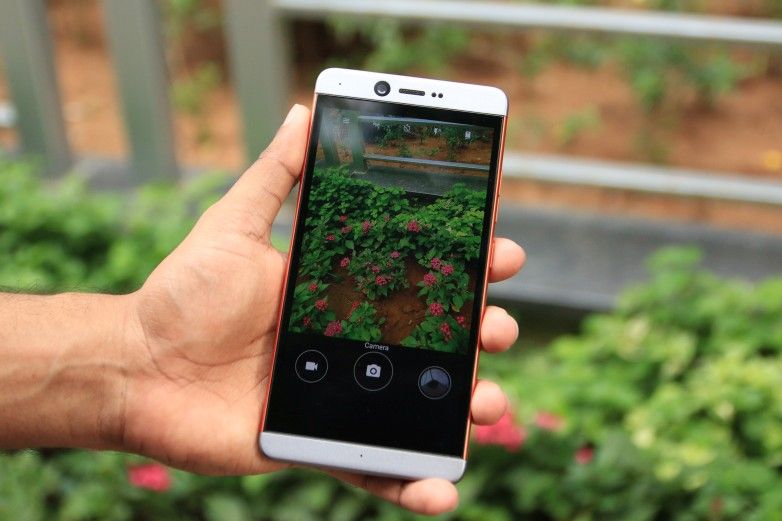 This doesn’t bode well for this phone because now it has to compete with last year’s smartphones such as the One Plus 2 and LG G4, which are polished and really well-optimised (well, at least that’s true for the G4). Unfortunately, the same cannot be said about the t.phone which is nowhere near as polished as its competitors. For starters, the Snapdragon 810 isn’t slow by any stretch of imagination, which means its poor showing here can be attributed to a lack of optimisation. Before you blame it on the SoC, this is a revised version with overheating and thermal throttling problems taken care of. At least, that’s what is claimed.
This doesn’t bode well for this phone because now it has to compete with last year’s smartphones such as the One Plus 2 and LG G4, which are polished and really well-optimised (well, at least that’s true for the G4). Unfortunately, the same cannot be said about the t.phone which is nowhere near as polished as its competitors. For starters, the Snapdragon 810 isn’t slow by any stretch of imagination, which means its poor showing here can be attributed to a lack of optimisation. Before you blame it on the SoC, this is a revised version with overheating and thermal throttling problems taken care of. At least, that’s what is claimed.
Once the phone was packed to the brim with apps and with a half-a-dozen of them open, I noticed a fair bit of lag while switching between apps and even some stutter when accessing heavier apps such as Facebook, Prisma, browsers with HTML5 content, and Google Maps. My first review unit had a peculiar problem of freezing and otherwise being unusable with Facebook and Messenger, but that problem went away once I received a replacement unit. However, the latent lag evident in all apps and especially when using the keyboard (to the point of missing keystrokes) still persisted. This is unbecoming of a phone in this price segment. Video performance was great, however, the phone doesn’t seem to play well with certain formats such as MKV.
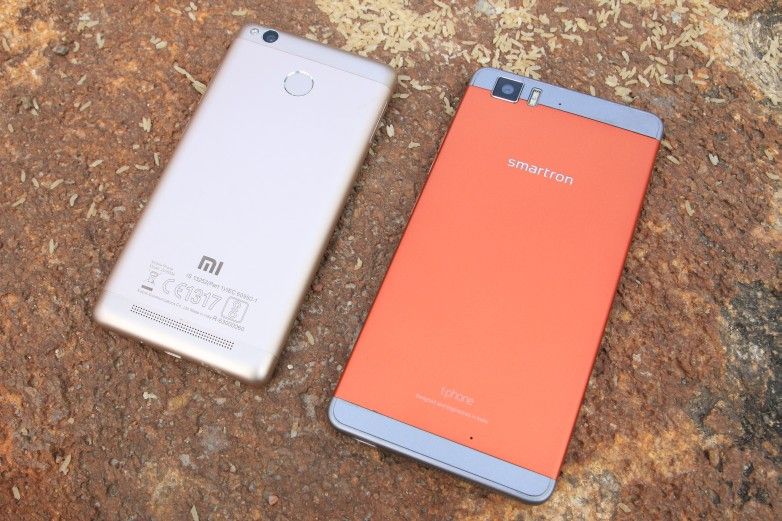 The t.phone handles games pretty well thanks to the Adreno 510 GPU backed by 4GB of RAM. Although games tend to stutter within the menus itself, that ceases to be an issue when the high-performance cores kick in during the actual game, which runs relatively smoothly. Mobile games such as Asphalt 8 and Modern Combat 5 were handled with only a few dropped frames here and there, so no complaints on that front. This phone serves this purpose well enough and most regular users won’t even notice these small frame drops. However, that’s still dire when you compare it to my daily driver, the Rs 12,000 LeEco Le2, which is able to handle these games better.
The t.phone handles games pretty well thanks to the Adreno 510 GPU backed by 4GB of RAM. Although games tend to stutter within the menus itself, that ceases to be an issue when the high-performance cores kick in during the actual game, which runs relatively smoothly. Mobile games such as Asphalt 8 and Modern Combat 5 were handled with only a few dropped frames here and there, so no complaints on that front. This phone serves this purpose well enough and most regular users won’t even notice these small frame drops. However, that’s still dire when you compare it to my daily driver, the Rs 12,000 LeEco Le2, which is able to handle these games better.
When you move up the price spectrum and compare the t.phone to its contemporaries, phones such as the Xiaomi Mi 5 easily outclass it in terms of performance. The Geekbench 4 CPU results of 1351 for single-core and 1996 for multi-core attest to this fact, and pale in comparison to that of the Xiaomi MI 5. The Antutu benchmark score of 70,413 also tells a similar story. Overall, Smartron hasn’t been able to optimise the relatively powerful Snapdragon 810 SoC to deliver a smooth experience, while also failing to match up to competitors in its price range and sometimes even below it.
On the connectivity front, the t.phone offers the ever popular dual SIM configuration, with the other SIM card slot doubling up for micro SD storage. The phone supports 4G with VoLTE, which is compatible with all Indian LTE service providers. Other connectivity options include the standard fare of Wi-Fi 802.11ac, Bluetooth 4.0, A-GPS, and FM radio. What’s missing here is a fingerprint sensor, IR blaster, and NFC. Needless to say, this will raise some eyebrows because all these features are now expected as standard fare in phone costing much less. The call quality was pretty good and the earpiece was sufficiently loud by smartphone standards. The signal reception was especially great with my Airtel connection because I generally experience call drops on other handsets through the same connection.
Software and Battery
That Smartron t.phone comes with no bloatware, apart from the Hungama and DTS Play-Fi; the latter being present because the phone features DTS Premium sound enhancement. Android 6.0.1 Marshmallow has been implemented in an almost stock configuration, which should delight a lot of hardcore Android geeks. Smartron has retained Marshmallow features such as the battery-saving Doze and the innovative Now on Tap, and News Feed in the slightly tweaked UI.
However, majority of the regular users spoiled by the heavily modified custom UIs, from pretty much every manufacturer out there, will find the lack of options in the stock UI troubling. A good example of this is the lack of enough icons and shortcuts in the notification shade, and other fancy UI enhancements found in competing custom UIs.
The monochrome clock and notification mode is the only major addition to the UI that can be enabled by shaking the phone in the locked state. This leverages the power-saving nature of AMOLED screen to show the time and important notifications without having to unlock the phone. Also included is the company’s own tronX app, which gives access to a host of services such as customer support, forums, product store, and also the unlimited t.cloud storage.
The 3000 mAh battery barely lasted a day under regular usage involving 3G voice calls, 4G browsing, Wi-Fi internet access, music over bluetooth, few minutes of gaming, WhatsApp, and abortive attempts to use Facebook and Messenger because the initial review sample had issues. I got about ten hours of usage with the screen-on time was abysmally low at two hours. However, this was down to the original review unit’s aforementioned problem with Facebook. The non-retail debug unit I received as a replacement managed to bump up the screen-on time to a little less than four hours. The provided quick charger is able to get the battery topped up in 45 minutes, which is pretty decent.
Verdict
The Smartron t.phone is a ballsy first attempt by an Indian firm that makes it a point to design and engineer its own products, as opposed to the present glut of Indian “manufacturers” prone to rebadging smartphones made by Chinese OEMs. What’s even ballsier is the company’s vision to avoid the budget segment altogether and go for the upper-mid range with a Rs 25,000 price tag. The problem with that is that puts it at odds with last year’s flagship phones which sport similar specifications, while also pitting it against the Likes of Xiaomi Mi 5 and LeEco Le Max2, both of which outperform the t.phone.
The lack of polish and SoC optimisation also leads to a sub-par performance, and that allows even lesser phones such as the LeEco Le 2 to outshine the t.phone. Then there’s the grave issue of inconsistent quality, which is evident from both my review units exhibiting varying issues and build quality gremlins. Needless to say, it’s hard to recommend a phone that is outshadowed in the performance stakes by a phone costing half as much, especially when it has no other redeeming features such as a decent camera or a good screen.












